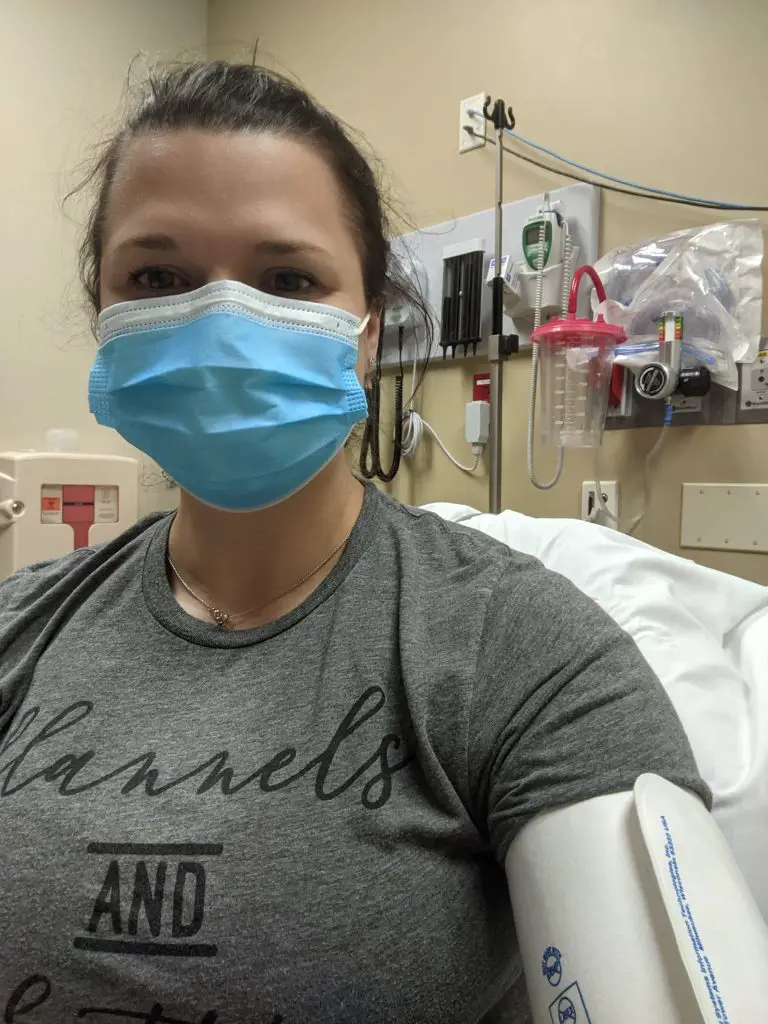Running Into Trouble in the Emergency Department: How to be Your Own Advocate
Seriously Hurt on a Run? How to Advocate for Yourself if You’re Injured & In the ER.
We’ve all been there. We’ve taken a tumble, pulled something, sprained something, maybe even fractured something. Running isn’t always the safest sport. If the worst case should happen and you end up in the Emergency Department (ED) you need to be prepared to advocate for yourself as a runner.
I’m Dr. Rebekah Griffith, a physical therapist practicing in the Emergency Department and I’m going to share some best tips to advocate for yourself below.
You’re Hurt Running & It Might Be Serious
Running can have hazards. Being hit by a car, falling off the side of a trail, dislocating a joint, taking a bad fall, and so many other possibilities. If you’ve really hurt yourself, you might have to go to the Emergency Room for help. This can be scary, but always err on the side of caution and get checked out.
First, take stock of your injuries. Most minor injuries can be managed by an outpatient physical therapist, your primary care provider, or an urgent care clinic. However, some injuries are more serious.
The following are red flags and should always be evaluated emergently.
- Any head injury resulting in loss of consciousness.
- Any open fractures or serious wounds.
- Inability to weight bear.
- Uncontrolled pain.
- Traumatic mechanisms of injury such as being hit by a car or falling from height.
Just go.
Bring Backup to the Emergency Department
When we’re injured we are often not at our best. The combination of pain, adrenaline, stress, and unfamiliarity can make it difficult to advocate, take in all the details around the plan of care, and integrate the post-care instructions. If you can, bring a friend or family member to help you.

Ask your support person to take notes you can review when things are calmer. Task them with squaring away your registration & insurance information, filling any prescriptions, getting any equipment you might need, and setting up follow-up appointments. This can make all the difference in getting you on a smooth road to recovery.
Be Prepared to Prevent ED Visits as a Runner
When you’re out running, the best thing you can do to be prepared for injury is to take preventative steps and basic safety measures which is a whole different blog!
If running alone, ensure you have a phone, a runner’s ID with key medical information, and emergency contact information. Ensure you have the right gear to prevent injuries related to the elements or nutrition/hydration issues. Choose safe and appropriate footwear.
What to Expect in the Emergency Room as a Runner
If your injuries are not life-threatening, be prepared to wait. Many hospitals are stretched to max capacity and health care workers are being asked to do more and more as we continue in the setting of a pandemic. Please be patient, kind, and respectful during your visit.
When it’s your time to be seen by a provider, (likely a physician, physician assistant, or nurse practitioner,) the amount of time you have will be limited. Consider exactly what happened and the pertinent information related to the injury.
Key components that ED providers want to know are:
- primary complaint (think severe ankle pain,)
- how it happened (be concise and accurate)
- when it happened, your current symptoms
- what you’ve done since
- your pertinent past medical history
- any medications you take regularly or have taken today.
Be prepared to repeat your tale multiple times. This can feel annoying, but if the last person to ask hasn’t had a chance to document what you told them in your chart yet, the new person in the room won’t have that information.
Also, most of us ask similar questions, but often from different perspectives.
Additionally, in repeating your story key details you hadn’t remembered may surface which can totally change a care plan. We appreciate your willingness to share your story multiple times. While it might sound harsh, the more effective you are with sharing this information the more appropriate and prompt that care will be.

Things that Extend your Emergency Room Visit as a Runner
This is the part where I say, be prepared to wait…again. Assuming you are stable and not being rushed into an O.R. or directly admitted to the hospital things take time. Blood work may take 1-2 hours to result. Imaging results may take 30 minutes to 1 hour to be read, and that’s if you can get into whatever scanner you need promptly.
X-rays are often fairly quick but CT scans and MRIs take a lengthy amount of time.
You may also be frequently “bumped in line” for patients experiencing life-threatening emergencies like strokes or polytrauma. Once all of the results are in, the medical team needs to decide what to do with that information.
Best case? All is well, you’re banged up and you spent a lot of time waiting and now you can go home. But, more information and storytelling may be needed.
It’s possible your team will call a consultant to come see you or want even more tests based on the results of the last tests! Throughout this process, your patience and grace are very much appreciated and will go a long way.
Advocate for Yourself as a Runner
What if the opposite happens? What do you do if you think you aren’t getting the care you expected? Ask why.
Here are some suggestions on how to guide this discussion.
- If no imaging is ordered and you were expecting at least an x-ray, try asking, “Why do you think imaging is not indicated for this injury?”
- If your pain remains intolerable after first-line treatments, try asking, “Do you have any other suggestions on how to continue managing my pain? Should I expect this level of pain to continue?”
- If you feel like your concerns aren’t being heard or addressed, say that. “I have several concerns that I feel haven’t been addressed.”
- In most cases, your provider has addressed your concerns without you knowing (out of view) through lab work, imaging, or other components of your history..
- A lot of your care actually happens outside of your room. This includes consultations, tests, reports from the nursing staff, etc. It’s critical to make sure your questions are all answered and you understand your plan of care as well as what has been or has not been addressed.

- If your injury is musculoskeletal, you should consider asking, “Do you have a physical therapist in your Emergency Department?”
- While having staff physical therapists in the ED is not overly common (yet), it’s worth asking. A physical therapist can oftentimes help you manage your pain without medications, evaluate you for any necessary equipment, like crutches, and give you great education about how to get back on the road to recovery quickly.
- If they do not have a PT on staff, consider asking for a referral so that you can follow up with a PT and get back out on the run as soon as possible.
Articles About Advocating For Yourself After Injury
- https://accessibility.fpm.wisc.edu/self-advocacy-in-an-emergency/
- https://healthblog.uofmhealth.org/wellness-prevention/6-things-to-do-when-visiting-emergency-room
- http://www.cnn.com/2008/HEALTH/01/15/ep.emergency.room/index.html
- https://www.apta.org/apta-magazine/2021/07/01/the-pt-in-the-emergency-department-a-call-to-crisis-care
- https://www.nuemblog.com/blog/runninginjuries
Articles Related to Runners in the Emergency Room
- How Does Cross-Training Prevent Injuries in Runners?
- How to Fix and Prevent Runner’s Knee
- Why Runners Need Physical Therapy
We hope you never have to take a trip to the Emergency Department, but if so, hopefully, this helps you feel ready. Keep running.
Rebekah Griffith PT, DPT
Board Certified Neurologic Clinical Specialist, Fellow in Training
The author, during a rainy weather race. Running in the rain is the best.
Bio
Dr. Rebekah Griffith, The ED DPT, specializes in care in the Emergency Department. Dr. Griffith believes physical therapist practice in the Emergency Department is a critical way to move upstream in healthcare that supports patients during their most critical moments. Dr. Griffith has been an invited lecturer, regular presenter, podcast guest, & article contributor on this topic. Additionally, she was instrumental in passing two motions within the APTA House of Delegates in support of Emergency Physical Therapist practice and is a founding member of the Emergency PT Steering Committee within the Academy of Acute Care. In addition to initiating a thriving ED PT program in a large academic medical center, she is in the midst of a new pilot program expanding this role. The ED DPT will prepare you to successfully practice in the Emergency Department so that patients have access to the right provider at a critical moment in their healthcare journey.
AFFILIATE DISCLOSURE
As an Amazon Associate, I earn from qualifying purchases. This post may contain affiliate links. If you use these links to buy something we may earn a commission. The Site may contain links to affiliate websites, and we receive an affiliate commission for any purchases made by you on the affiliate website using such links.
All information should be used as a tool for more knowledge on the subject topic, to use as references for later articles where applicable, or just to keep it in mind during future exercise routines or activities.
This article is not meant to give medical advice or to replace professional health care. Should any ailment occur please contact your doctor or physical therapist immediately to keep yourself safe and prevent further damage.
The author is not liable for any personal or commercial damage directly or indirectly related to the content hereof. You are responsible for adhering to local laws and regulations regarding health & safety, including proper use of equipment or safety gear, and compliance with governing healthcare associations, and state, and federal regulations.
Running Into Trouble in the Emergency Department

Dr. Abby Siler, PT, DPT is a Physical Therapist with 10 years of experience in a variety of settings. She has spent the majority of her time treating athletes in orthopedic clinics and worker’s compensation cases. She is a runner herself for the past 15 years and a lifelong athlete. Dr. Abby loves to teach runners how to stay injury free and out of her clinic.







